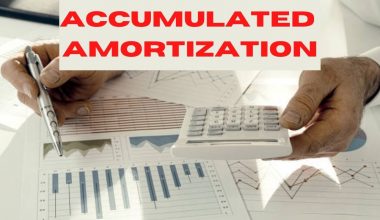Window dressing is a strategy employed by open-end investment companies and other portfolio managers to boost the looks of a fund’s performance before presenting it to clients or shareholders.
The basic idea of window dressing is to mislead shareholders and investors by presenting a positive picture of the organization’s performance.
Its goal is to draw in more people and more cash, by boosting the appearance of the financials of an investment company.
Overview of Window Dressing
In a case where the financials of the corporate doesn’t seem favorable or acceptable, the management of the corporate tends to control the facts and figures mentioned within the financials.
This is done through some methods which are unethical and also the practice is voluntarily & intentionally executed by the management. Such practices are termed as Window Dressing in Accounting.
This helps the management in gaining the trust of the investors, shareholders of the corporate, and users of the budget of the corporate.
The financial position of the corporate plays a giant role for the corporate to expand its business likewise as earn the trust of the investors and other interested parties.
READ MORE: Double-Entry Accounting Explained!!! Definition, How it Works, & Examples
In Accounting
Window Dressing in Accounting refers to the manipulation done by the management of the corporate intentionally within the financial plans so as to present a more favorable picture of the corporate before the users of the financial statement.
For a corporation, window dressing is very important because every business wants its financial information to appear as appealing as possible. This is what attracts new business opportunities, investors, and even consumers.
For investors, window dressing provides another good reason to watch your fund performance reports closely.
Some fund managers might try and improve returns through window dressing, which suggests investors should use caution of holdings that appear out of line with the fund’s overall strategy.
The downside to window dressing is that it is often checked out with skepticism.
Window dressing comes with negative remarks. This can be because it can – and sometimes does – involve making unethical or maybe illegal changes to numbers, charts, timelines, orders, etc., to form the financial picture of a corporation look the foremost appealing to outsiders.
READ MORE: Automating Accounts Payable Process: What You Should Know Before Automation
Window Dressing Meaning
Window dressing could be a strategy utilized by fund and other portfolio managers to enhance the looks of a fund’s performance before presenting it to clients or shareholders.
To window dress, the fund manager sells stocks with large losses and purchases high-flying stocks near the tip of the quarter or year. These securities are then reported as a part of the fund’s holdings.
The term also can include actions taken by companies to boost their forthcoming plan, usually by postponing payments or finding ways to book revenues earlier.
Performance reports and an inventory of the holdings within an investment company are usually sent to clients quarterly, and clients use these reports to watch the fund’s investment returns.
When performance has been lagging, open-end fund managers may use window dressing, selling stocks that have reported substantial losses and replacing them with stocks expected to supply short-term gains to boost the general performance of the fund for the reporting period.
READ MORE: ACCOUNTING CYCLE: What is Accounting Cycle & All you Need
Variation of Window Dressing
Another variation of window dressing is investing in stocks that don’t meet the fashion of the investment trust.
For example, a precious metals fund might invest in stocks during a hot sector at the time, disguising the fund’s holdings and investing outside the scope of the fund’s investment strategy.
Window dressing is usually performed heavily with mutual funds. At the top of a reporting or financial period, mutual funds often quickly sell stocks in their portfolio that aren’t performing well.
The cash generated from the sales is then employed in a fast turnaround to shop for shares of stocks within the high-performance range. The end-of-period “rebalancing” of the fund’s assets is intended to form the fund appear better than it actually is at selecting winning stocks.
Through window dressing, investment firm owners and managers are making the fund look brighter.
Potential investors see the fund stuffed with high-performing stocks – and don’t see the poor-performing stocks that were recently dumped – and are, thus, rather more likely to take a position within the fund.
Such a practice is that the primary goal of window dressing – to draw in investors and add more income to the investment pool.
Window dressing also occurs across various other industries.
For example, companies can give products at discounted prices or promote special deals that enhance sales for the tip of the amount. These promotional efforts seek to extend the return within the final days of a reporting period.
READ MORE: ACCOUNTS PAYABLE PROCESS: How to Manage the Process Effectively
Window Dressing in Finance
“Window dressing” is often accustomed to the way a pedestrian facing the window of a retail business is presented to form their goods look most appealing.
Now, in the finance world, the term means something slightly different.
In finance, window dressing refers to the efforts taken to form the financial statements of a business to look better before they’re publicly released.
Window dressing can boost a fund’s returns within the short term, although longer-term effects on a portfolio are typically negative.
While these holdings may show higher short-term performance, within the future these kinds of investments drag on the portfolio’s returns. This makes it difficult for a portfolio manager to hide poor performance for long.
Investors will definitely identify these sorts of investments, and also the result’s often lower confidence within the fund manager and increased fund outflows.
READ ALSO: TRIAL BALANCE: What is Trial Balance & How Does it Work?
Importance of Window Dressing
Window dressing is very important for the following reasons:
- It protects an enterprise from takeovers. Managers may revalue the enterprise’s assets, especially its brands, at the next price. In doing so, the enterprise’s assets position is boosted, which discourages a possible buyer from bidding.
- It helps to improve share valuations by posting higher profits (e.g., profits arising from revaluation being treated as revenue). The managers show the general public that their performance is nice, which might not be the case truly.
- To appease shareholders by posting higher profits and, thereby, encouraging them to approve accounts without interrogation at the Annual General Meeting (i.e., to manage the meeting smoothly, where it’d be difficult otherwise).
- To increase revenue from takeovers. Although this act is taken into account to be fraudulent, enterprises manage it by furnishing approvable statistics to justify the act.
- To win or to retain institutional investors’ support. This can be achieved using creative accounting to disguise poor performance trends (creative accounting involves inflating profits or manipulating asset and liability figures).
- To retain or gain lines of credit. Business creditors are encouraged by strong liquidity (where, in reality, the liquidity is managed).
READ MORE: Human Capital: Definition, Theories & Roles in the Economy
Window Dressing Examples
Examples of window dressing are as follows:
- Cash window dressing: This involves postpone paying suppliers, so the period-end cash balance appears reasonable.
- Accounts receivable: Record an insanely low debt expense, so the assets (and therefore the present ratio) figure looks better than is de facto the case.
- Capitalization: This involves capitalizing smaller expenditures that may normally be charged to expense, to extend reported profits.
- Fixed assets: This involves unloading fixed assets with large amounts of accumulated depreciation related to them. Therefore the net value of the remaining assets appears to point a comparatively new cluster of assets.
- Revenue. Offer customers an early shipment discount, thereby accelerating revenues from a future period into this period.
- Depreciation. Switch from accelerated depreciation to straight-line depreciation so as to cut back the number of depreciation charged to expense within the current period. The mid-month convention may be wont to further delay expense recognition.
- Expenses: This involves withholding supplier invoices, so they’re recorded during a later period.
READ MORE: PUBLIC LIABILITY INSURANCE COVER: What Does Public Liability Insurance Cover?
Window Dressing Ideas
Companies typically window dress their financial statements by selling off assets and either purchasing new assets or using this money to funds other operations. After doing, the cash balance on the record appears to be at a traditional amount.
It may even be used when an organization wants to impress a lender so as to qualify for a loan. If a business is closely held, the owners are usually better informed about company results. So there’s no reason for anyone to use window dressing in the financial statements.
Window dressing is perhaps most ordinarily found in investment brokers and investment company houses.
Investment trust managers often unload poor-performing stock and other investments near the tip of a period and use the money to shop for high-performing stock.
This makes new investors see the portfolio of high-performing stock and wish to take a position. Obviously, this is often only a short-term strategy for novice investors. Any experienced investor will analyze portfolio trends over the past few periods to determine if the fund’s managers are investing wisely.
READ MORE: INTERNATIONAL MARKETING: Strategies, Types, Examples, Pros & Cons
What is Window Dressing in Critical Thinking?
If you criticize anything because it is done to give off a positive impression and keep people from recognizing the true—or more unpleasant—nature of someone’s actions, you are using the term “window-dressing.”
What Are The Consequences of Window Dressing?
A high ratio means the business has sufficient cash and short-term assets to cover interest payments. However, when window dressing can no longer conceal weak cash flows, loans received in this manner may really result in a cash emergency. This raises the possibility of default, insolvency, and liquidation.
Why Window Dressing is Prohibited?
In window dressing, accountant or businessman changes the information in accounting records for getting benefits from outside parties. So, as per convention of disclosure, it should be prohibited.
What Are the Advantages of Window Dressing?
Window dressing is a short-term tactic employed by businesses and funds to enhance the appearance of their financial reports and portfolios to customers, consumers, and investors. The objective is to draw more customers and revenue, hopefully increasing the bottom line for the following reporting period.
Is Window Dressing Illegal or Unethical?
Window dressing is immoral because it gives stakeholders, investors, and lenders false financial information that is essential to their decision-making.
What Curtains Are in Style 2023?
The fashions of curtains and drapes are evolving in 2023 toward simplicity and minimalism. When selecting new curtains for your home, less fluff and more movement is preferable. To go with this year’s light, calming, and naturalist themes, traditional fabrics like cotton and linen are at the top of the trend list.
What Are The 4 Key Critical Thinking Skills?
Identifying biases, inference, research, identification, curiosity, and determining relevance are essential critical thinking abilities. Here are six critical thinking abilities you should develop, along with an explanation of why they’re so crucial to the critical thinking process.
Bottom Line
In summary, window dressing is a technique used to boost the looks of a fund’s performance before presenting it to clients or shareholders. The top goal of window dressing is to make more profits.
I hope this article justifies what window dressing is all about. If you have any questions or suggestions, drop them in the comments section.
Good luck!
Recommendation
- Human Capital Investment: Meaning, Management & Examples
- INTANGIBLE ASSETS: What are Intangible Assets? (+ Accounting Examples)
- Strategic Human Resource Management: Steps to Strategic Management Process with Examples
- Resource Management: Definition, Importance, and Planning
- SMALL BUSINESS INSURANCE: Overview, Liability, Requirements, Costs






